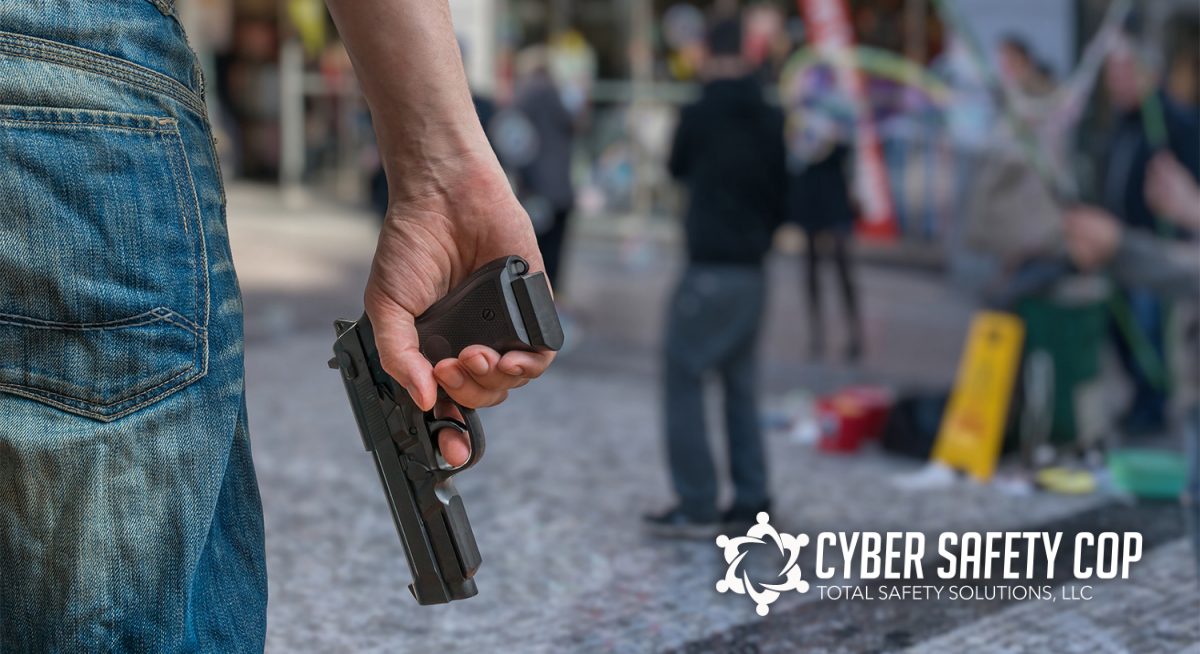I am fearful we will be facing an oncoming tsunami of mass shootings. Why? Because of the new and untreated mental health issues and financial strain that have been festering in last year's pandemic lockdown.
Mass shootings, which had become far less frequent in 2020, have come roaring back. Several weeks have passed since the three Atlanta-area spa shootings claimed the lives of eight people, and in that time at least 20 other mass shootings have taken place. The incidents have stretched from California to Washington, DC, and many have left multiple victims dead. Mass shootings, defined as four or more people shot and killed in a public setting (not including gang violence) were down to almost zero in 2020. A key factor why there were no mass shootings for about a year, between March 2020 and March 2021, was the COVID-19 pandemic. Many of the settings where mass shootings typically occur — workplaces, schools, churches, shopping centers — had either shut down or sharply reduced their capacity.
Why the surge now? I am fearful we will be facing an oncoming tsunami of mass shootings. Why? Because of the new and untreated mental health issues and financial strain that have been festering in last year's pandemic lockdown.
I was a member of Orange County, California's school threat assessment team, and I have conducted hundreds of threat assessments. I now train others to do the same in their communities. The path to violence has many dimensions, and one of the most important ones is the presence of stressors.
In June of 2018, the Federal Bureau of Investigation, U.S. Department of Justice published what they called their Phase II study of active shooting incidents in the United States, A Study of the Pre-Attack Behaviors of Active Shooters in the United States Between 2000 and 2013. This is a follow-up report to their Phase I study published in 2014 titled, A Study of Active Shooter Incidents in the United States Between 2000 and 2013. In this groundbreaking study, they found that active shooters were typically experiencing multiple stressors (an average of 3.6 separate stressors) in the year before they attacked. Stressors are physical, psychological, or social forces that place real or perceived demands/pressures on an individual and which may cause psychological and/or physical distress. 62% of the active shooters were experiencing mental health stress. The stressor "mental health" indicates that the active shooter appeared to be struggling with (most commonly) depression, anxiety, paranoia, etc. in their daily life in the year before the attack. The reason someone becomes a mass shooter is more complicated than just suffering from a mental health illness, and not everyone with mental health issues will become violent. People with mental health illnesses are more likely to self-harm than ever hurt others. The second prevalent stressor found in the study was financial strain. 49% of the active shooters in the FBI study were suffering under some kind of financial stress.
The COVID-19 pandemic has meant living through multiple stressors, including financial and disease-related ones, all at once. According to the Kaiser Family Foundation, 4 in 10 adults in the United States have reported anxiety or depressive disorder symptoms during the pandemic.
But a poll from C.S. Mott Children's Hospital shows that the mental health effects of the pandemic are more likely to have a significant impact on teenagers. According to the C.S. Mott Children's Hospital National Poll on Children's Health at Michigan Medicine, a national poll shows that 46 percent of parents say their teen had shown signs of a new or worsening mental health condition since the beginning of the pandemic in March 2020. "Teenage years are filled with physical, emotional, and cognitive changes. There are also hormonal shifts, more independence and responsibility, and peer challenges," said Brittany LeMonda, PhD, senior neuropsychologist at Lenox Hill Hospital in New York. "It is therefore not surprising that teens have been more susceptible to declines in psychological health over the last year."
I am fearful that last year's lockdowns and uncertainty were the perfect storm for propelling people on a path to violence towards a deadly attack. So, what do we do now? The answer is not to hide in fear but face this challenge head-on and work to create solutions that will save lives.
The Solution
To stop future mass shootings, we need well-trained individuals in behavioral threat assessment to identify and stop people on a path to violence. We need to understand how someone gets on a path to violence and what that path looks like. Every school district needs a behavioral threat assessment team. That team needs to be made up of law enforcement, psychologists, social workers, and school administration. Ask yourself, does my school or police agency have a trained threat assessment team? Are they retrained every year? If you answered "no" to either question, this issue needs to be pushed to the t

